You don’t need to be Muslim to feel something special when you walk through the gates of Jumeirah Mosque. It’s not just a place of worship-it’s a quiet heartbeat in the middle of one of the world’s busiest cities. The white domes catch the sun like sugar-dusted clouds. The minarets rise like calm sentinels over the bustling streets of Jumeirah. And inside? Silence. Not the kind that feels empty, but the kind that feels full-full of history, respect, and peace.
What Makes Jumeirah Mosque Different?
Jumeirah Mosque isn’t just another building with a dome. It’s one of the few mosques in Dubai open to non-Muslim visitors. That’s rare. In many places around the world, religious sites are off-limits unless you share the faith. But here? They invite you in. Not to convert. Not to judge. Just to see. To understand. To feel.
It was built in 1979, modeled after 10th-century Fatimid architecture from Egypt. That means intricate stonework, arched windows, and those sweeping domes you see in postcards. But unlike older mosques that feel distant or formal, Jumeirah Mosque feels alive. Locals come here to pray. Tourists come here to learn. And the staff? They’re always smiling, ready to answer questions-even the ones you didn’t know you had.
It’s not just beautiful. It’s intentional. Every curve in the arches, every tile in the courtyard, every word carved into the walls was chosen to reflect harmony. Not just between people and God-but between cultures, between traditions, between East and West.
Why It Matters Beyond Religion
Think about what Dubai represents: glass towers, luxury cars, neon lights, global brands. It’s a city built on speed and scale. But Jumeirah Mosque? It’s the opposite. It’s still. Quiet. Grounded.
That contrast is powerful. In a world where headlines scream division, here you walk into a space where everyone-whether they’re from Nigeria, Japan, Canada, or Australia-is treated the same. You’re given a robe if you need one. Someone shows you where to wash your feet. No one asks where you’re from. No one checks your passport. You’re just… welcome.
That’s not accidental. The mosque runs guided tours five days a week through the Dubai Tourism program. Over 100,000 people visit every year. Most aren’t here for prayer. They’re here because they’ve heard: This is what tolerance looks like.
What You’ll See Inside
When you step inside, the first thing you notice is the light. It filters through stained-glass windows, painting the floor in soft blues and golds. The prayer hall holds over 1,200 people, but it never feels crowded. The ceiling is carved with geometric patterns that seem to go on forever-no two designs are the same. That’s not just decoration. In Islamic art, repetition without replication is a reminder: God’s creation is infinite, but never repetitive.
The carpets? Handwoven in Iran. The chandeliers? Crystal from Lebanon. The calligraphy? Quranic verses in classical Kufic script, etched into marble. You don’t need to read Arabic to feel the weight of it. You feel the care. The craftsmanship. The quiet pride.
There’s also a small museum section with artifacts from the Prophet Muhammad’s era-replicas, yes, but still deeply moving. A wooden comb. A leather prayer mat. A copy of the Quran written by hand in the 8th century. These aren’t just relics. They’re stories. And they’re here to teach.
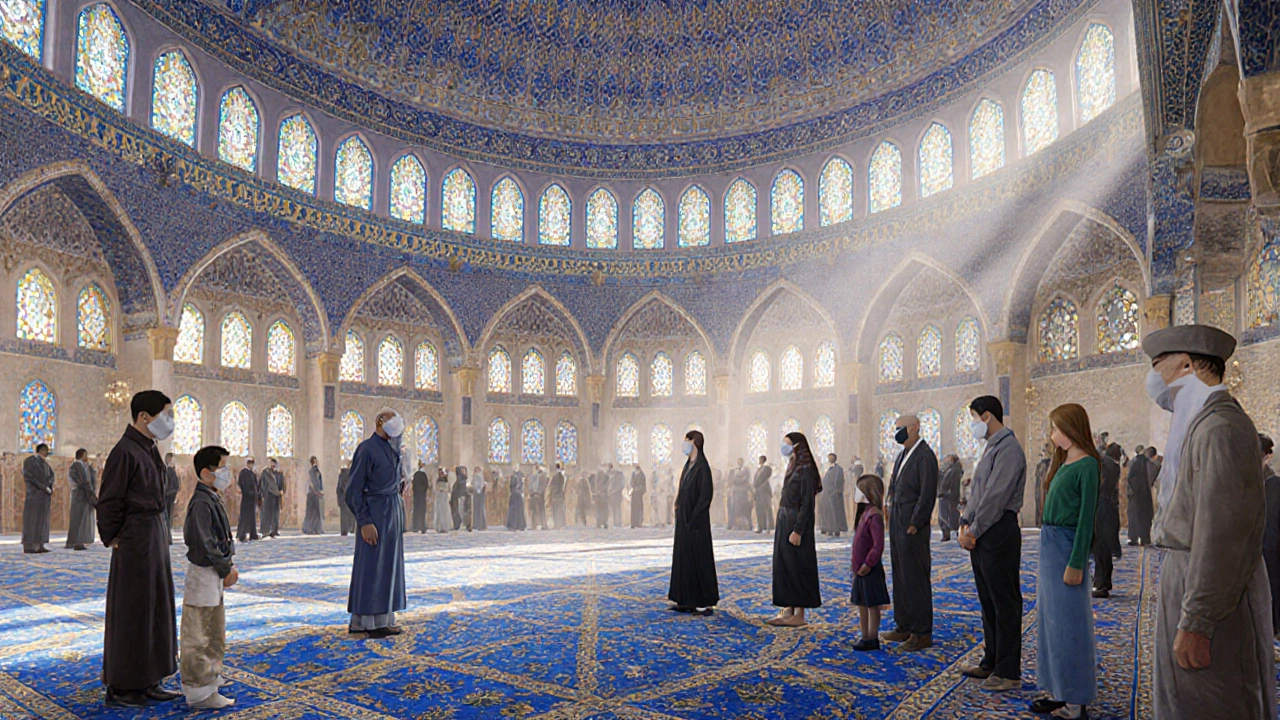
How to Visit: Practical Tips
You can’t just show up and wander. The mosque opens for guided tours only. Here’s how it works:
- Book online through the Dubai Tourism website-it’s free, but spots fill fast.
- Choose your time: Tours run daily from 9 AM to 5 PM, except Friday prayers.
- Dress modestly: Women cover hair, shoulders, and knees. Men wear long pants. They give you robes if you forget.
- Arrive 15 minutes early. There’s a short video about Islamic culture before you enter.
- No phones in the prayer hall. No flash photography. No loud talking.
Pro tip: Go right after lunch. The light hits the domes perfectly, and the crowds thin out. You’ll have the courtyard almost to yourself.
Who Should Go?
Everyone. Seriously.
If you’re a tourist who’s only seen the Burj Khalifa and the Dubai Mall-this is the hidden gem you didn’t know you needed. If you’re a student studying religion or architecture? This is a living textbook. If you’re feeling cynical about the world? Come here. Watch a grandmother in a hijab hold her grandson’s hand as they walk in. Watch a teenager from Germany kneel beside a man from Pakistan, both bowing in prayer. Watch how no one looks twice.
This isn’t a place for Instagram selfies. It’s a place to pause. To breathe. To remember that peace isn’t loud. It doesn’t need to be shouted. It just needs to be shown.
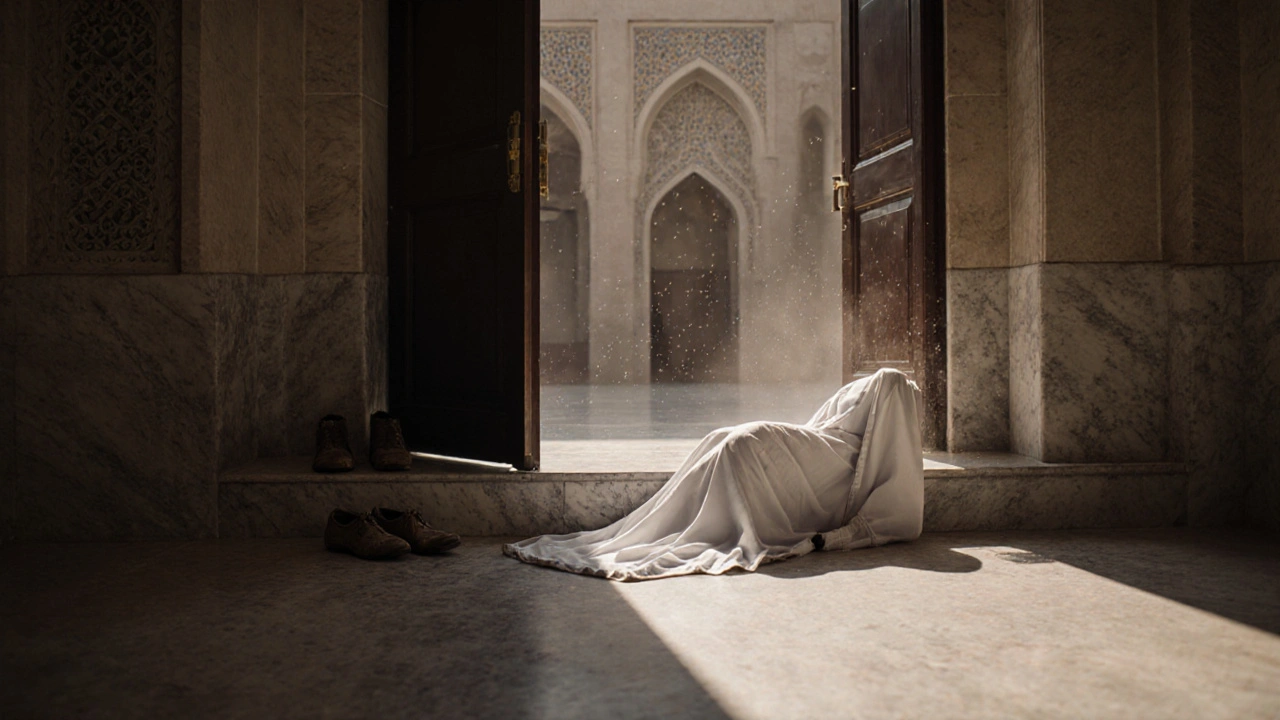
Jumeirah Mosque vs. Other Mosques in Dubai
There are over 1,000 mosques in Dubai. Most are beautiful. Most are sacred. But only a handful welcome outsiders. Here’s how Jumeirah stands out:
| Feature | Jumeirah Mosque | Other Mosques (Most) |
|---|---|---|
| Open to non-Muslims | Yes, daily guided tours | No, except for private visits |
| Free entry | Yes | N/A (not open to public) |
| English-speaking guides | Yes | Rare |
| On-site cultural museum | Yes | No |
| Architectural style | Fatimid (10th century) | Modern or Gulf-style |
| Visitor capacity per day | Up to 1,000 | 0-10 |
That’s not just a difference in policy. It’s a difference in philosophy. Jumeirah Mosque doesn’t just exist to serve worshippers. It exists to build bridges.
Frequently Asked Questions
Can I visit Jumeirah Mosque without booking?
No. All visits require a prior reservation through the Dubai Tourism website. Walk-ins are not allowed. Tours are limited to 25 people per session, and they fill up quickly-especially during holidays and weekends. Book at least 3-5 days in advance.
Is there a dress code for women?
Yes. Women must cover their hair with a scarf, wear long sleeves, and cover their legs down to the ankles. The mosque provides free abayas (long robes) and headscarves at the entrance if you don’t have them. No makeup or jewelry is required to be removed, but modesty is expected.
Are children allowed?
Yes, children of all ages are welcome. Many families bring their kids to teach them about different cultures. Just make sure they’re quiet and respectful during the tour. Strollers are allowed in the courtyard but not inside the prayer hall.
Can I take photos inside?
You can take photos in the courtyard and museum area, but not inside the main prayer hall. Flash photography is prohibited everywhere. No selfies in front of the prayer rugs or near worshippers. The staff will politely remind you if you forget.
Why is Jumeirah Mosque so famous?
Because it’s one of the few mosques in the Gulf region that actively invites outsiders to learn about Islam. It’s not a tourist attraction pretending to be sacred-it’s a sacred space that chose to be open. That’s rare. And it’s why it’s been featured in UNESCO reports, BBC documentaries, and school curriculums across Europe and North America.
Final Thought: More Than a Mosque
Jumeirah Mosque isn’t just a building. It’s a quiet revolution. In a world that’s quick to label, it refuses to categorize. In a time when fear drives headlines, it offers silence. And in a city built on glitter and growth, it reminds us that the deepest beauty doesn’t shine-it settles.
You don’t have to believe in God to believe in this place. You just have to be willing to stand still for five minutes. To look. To listen. To feel something you didn’t expect.
That’s the real gift it gives you.

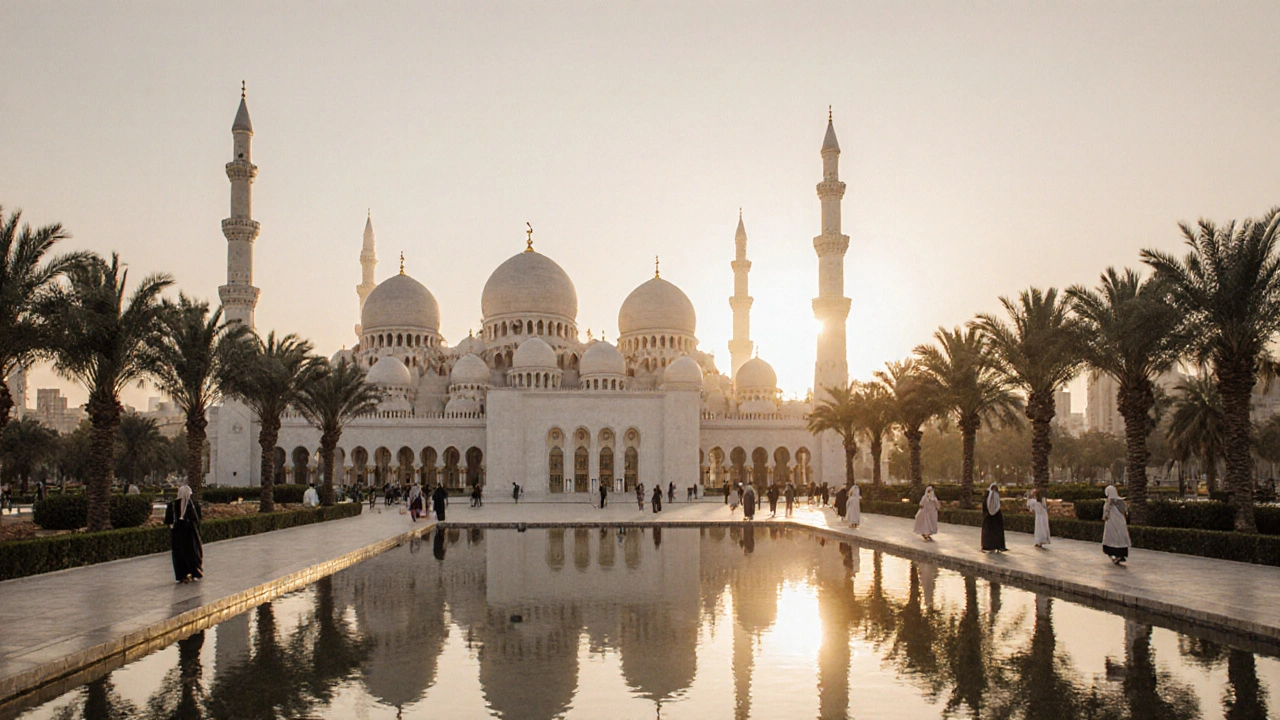
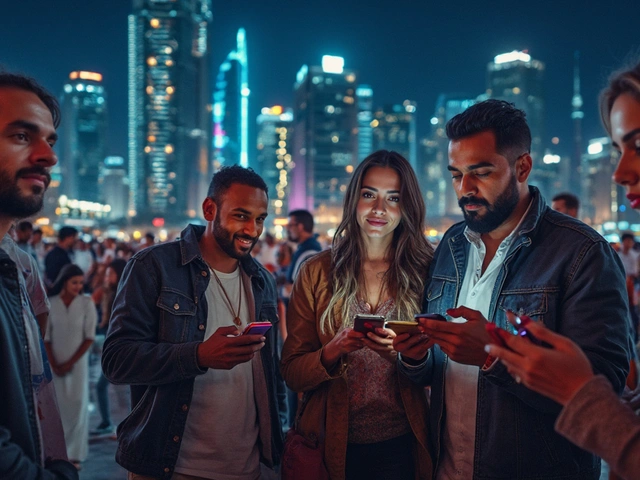
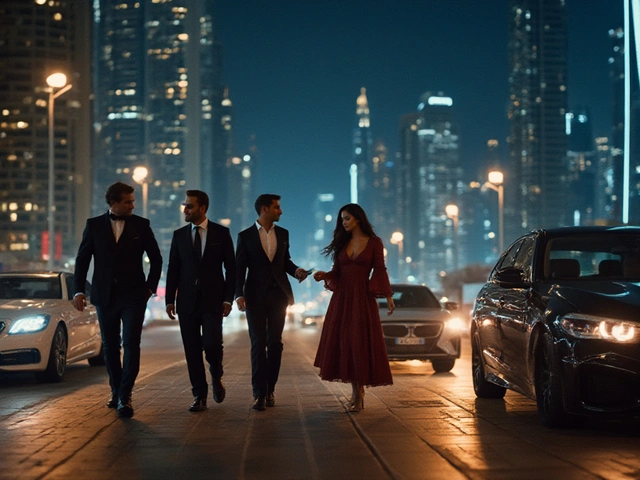

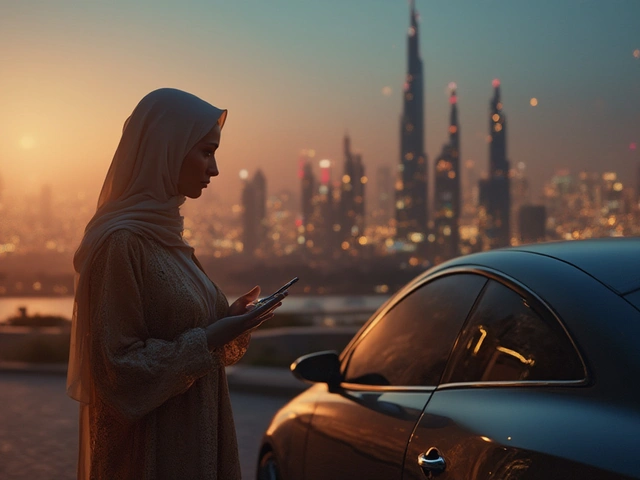

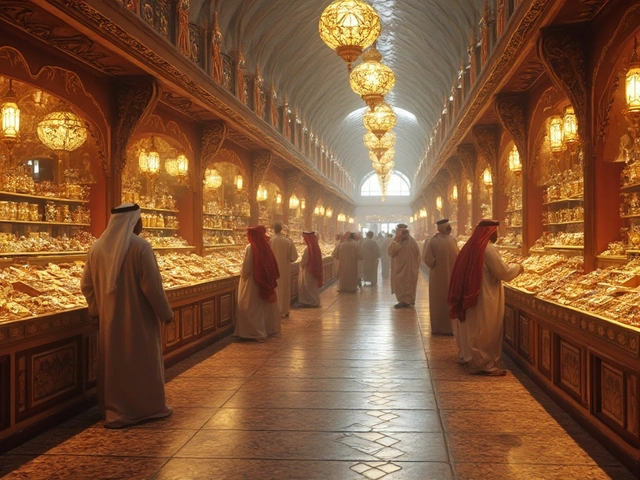
Stephanie Suttle
November 3, 2025 AT 06:02Okay but have you seen the way the light hits the domes at golden hour? I cried. Not dramatic crying, like full-on ugly-sobbing while trying to look like I wasn’t crying. My guide thought I was having a spiritual experience. I was just overwhelmed by how something so old could feel so alive. Also, the robes they give you? Way more comfortable than my jeans. I wore mine all day.
Also, why is no one talking about how the carpets smell like lavender? Someone told me they’re washed in rosewater. I don’t know if that’s true but I believe it.
Also also - I bought a tiny ceramic tile from the gift shop. It’s on my nightstand now. I touch it before I sleep. Don’t judge me.
Also also also - I’m going back next month. Bring snacks. They don’t sell them inside.
Abagail Lofgren
November 3, 2025 AT 11:44The architectural fidelity to Fatimid design is remarkable, particularly the muqarnas vaulting in the courtyard and the precise geometric proportions of the arches. The mosque’s integration of public accessibility within a sacred framework represents a rare model of civic theology - one that prioritizes intercultural dialogue over exclusivity. The documentation of visitor demographics and tour feedback suggests measurable impacts on reducing Islamophobia in Western tourists, particularly among millennials. This is not merely tourism; it is soft diplomacy executed with architectural elegance.
For academic reference, see: ‘Sacred Spaces as Public Commons’ - Journal of Islamic Architecture, Vol. 12, 2021.
rafael marcus
November 4, 2025 AT 14:28I went last winter with my 7-year-old niece. She was terrified of the silence at first - said it felt like the room was holding its breath. Then she saw a woman in a hijab gently helping a toddler tie his shoe, and she whispered, ‘They’re just people.’ That’s the whole damn point. No sermons. No pressure. Just people being kind in a beautiful space.
And the guide? He told us the story of how the mosque’s architect had his first sketch rejected three times because it was ‘too soft.’ He kept going. That’s the spirit of this place. Soft, stubborn, and beautiful.
Bring a journal. You’ll want to write something down.
And if you’re nervous? Go on a Tuesday. No one’s there. Just you, the light, and the quiet. You’ll thank yourself later.
Michelle Zhong
November 5, 2025 AT 14:20There’s a quiet rebellion in a space that refuses to shout its virtue - that simply exists as a sanctuary for the curious, the weary, the lost, the seeking. Jumeirah Mosque doesn’t preach tolerance. It embodies it. Like a tree that doesn’t announce its shade but simply offers it. No fanfare. No hashtags. Just the slow, steady hum of human dignity.
I think we’ve confused visibility with virtue. This place doesn’t need to be viral to be valuable. It’s the opposite - it’s anti-viral. It doesn’t spread. It settles. It roots. It breathes.
And maybe that’s the real miracle: not the marble, not the carpets, not even the light - but the fact that for 100,000 people a year, the world paused. Just for a moment. And didn’t try to fix it. Didn’t try to own it. Didn’t try to post it.
It just… let it be.
That’s more revolutionary than any protest.
I’m not religious. But I believe in this place.
And I think that’s enough.
Kim Kemper
November 5, 2025 AT 23:13I went with my mom and we both cried. Not because we were religious - because we were human. The woman who gave us the robes smiled and said, ‘You don’t have to be one of us to be welcome here.’ That’s the kind of line you carry in your bones forever.
Also, the chandelier? It looks like frozen stars. I took a picture but didn’t post it. It felt too sacred for likes.
Thank you for writing this. I needed to read it today.
Yzak victor
November 7, 2025 AT 10:32Correction: The mosque is modeled after Fatimid architecture, but the specific domes and minarets are more closely aligned with 12th-century Cairo styles, particularly those from the Al-Azhar complex. The stonework uses limestone quarried from the Arabian Peninsula, not imported - that’s a common misconception. Also, the calligraphy isn’t Kufic - it’s Thuluth, which is more fluid and ornamental. Kufic is angular and used primarily in early Qurans. You’re welcome.
Also, the museum artifacts are replicas, yes - but they’re museum-grade reproductions based on the originals in the Museum of Islamic Art in Doha. The 8th-century Quran copy? That’s a facsimile of the Samarkand Codex. You should know the difference if you’re writing about cultural heritage.
Kiara F
November 8, 2025 AT 11:26Why are we celebrating a mosque like it’s some kind of utopia? This is just another religious institution. You think they’d let a Christian church do this? Open to everyone? No way. They’d lock the doors and charge $50 for a ‘spiritual experience.’ This is selective virtue signaling. They’re only open because they want Western approval. Don’t be fooled.
Also, women have to cover up. That’s oppression. Don’t pretend it’s ‘modesty’ - it’s control. And you’re all just drinking the Kool-Aid.
Nelly Naguib
November 9, 2025 AT 11:09OMG I went there and I swear I saw a man in a turban whispering to a woman in a hijab and I thought, ‘This is the future of the world’ - but then I saw a tourist take a selfie in front of the prayer rugs and I wanted to scream. You people don’t get it. This isn’t a backdrop for your TikTok. It’s a house of God. You’re not special. You’re just loud.
And why is everyone acting like this is some miracle? There are mosques in Indonesia that are 500 years older and they don’t have guided tours. They don’t need to. They just are. You’re making it into a theme park. Stop it.
Also, the robes? They’re not ‘comfortable.’ They’re a reminder that you’re a guest. Not a customer. Not a content creator. A guest.
Grow up.
Nicole Ilano
November 10, 2025 AT 15:38From a UX/UI perspective, the mosque’s visitor flow is genius - the pre-tour video acts as a soft onboarding sequence, reducing cognitive load before immersion. The robe distribution system is a frictionless onboarding touchpoint that eliminates cultural barrier friction. The no-phones policy in the prayer hall is a brilliant behavioral nudge - it leverages loss aversion (fear of social disapproval) to enforce presence.
And the museum section? That’s a curated narrative arc - artifacts as story beats. The comb → mat → Quran = progression from personal → communal → divine. It’s narrative architecture. Brilliant.
They’ve turned sacred space into a phenomenological experience engine. I’d love to consult on scaling this model to other interfaith centers. 🤝
Susan Baker
November 10, 2025 AT 16:59Let’s deconstruct the underlying semiotics of Jumeirah Mosque as a postcolonial artifact. The Fatimid architectural revival isn’t merely aesthetic - it’s a deliberate reclamation of Islamic identity through pre-Ottoman visual lexicons, positioning the UAE as the inheritor of a ‘pure’ Islamic heritage, untainted by later Turkic or Persian influences. The decision to open to non-Muslims is not altruistic but strategic: it serves as a soft power mechanism to reframe Islamic spaces as ‘moderate’ in Western geopolitical discourse, thereby neutralizing narratives of religious extremism. The inclusion of English-speaking guides and a museum section functions as a pedagogical apparatus that translates Islamic tradition into digestible, non-threatening cultural commodities for Western audiences. The emphasis on ‘quiet’ and ‘peace’ as defining characteristics is a linguistic strategy to depoliticize the mosque’s function - reducing it from a site of theological authority to a neutral aesthetic object. The fact that visitors are given robes rather than instructed to dress modestly themselves is a subtle power dynamic - it reinforces the notion that the mosque is the ‘host’ and the visitor is the ‘guest,’ thereby maintaining institutional control under the guise of hospitality. This is not tolerance - it’s curated acceptance. And the 100,000 annual visitors? They’re not coming to understand Islam. They’re coming to consume it. The mosque isn’t a bridge - it’s a stage. And we’re all just spectators in a beautifully lit, perfectly curated performance of tolerance.
And yet - I still cried.
Because even if it’s staged - the silence still feels real.